40+ Direct Marketing Samples
-
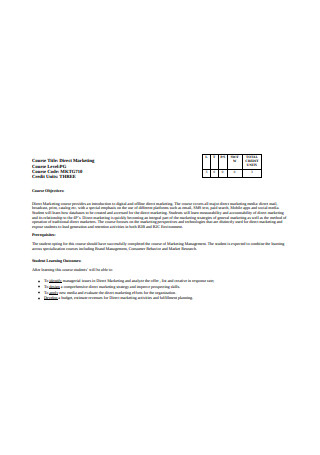
Direct Marketing Sample
-
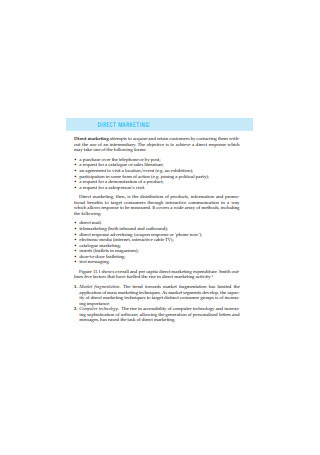
Customers Direct Marketing Sample
-
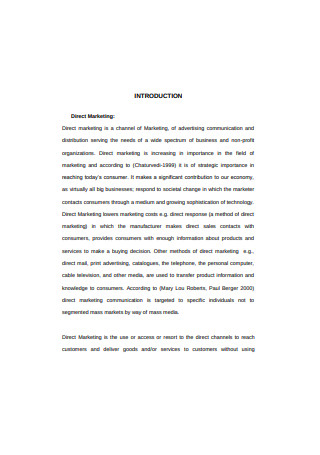
Advertising Communication Direct Marketing
-
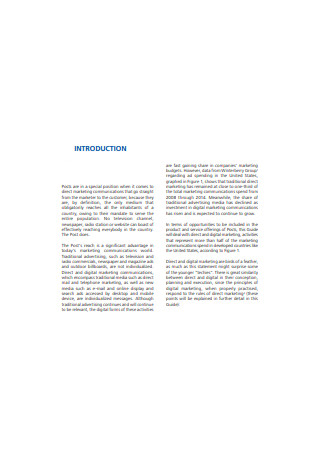
Direct and Digital Marketing Sample
-

Business Intelligence Direct Marketing Process Sample
-
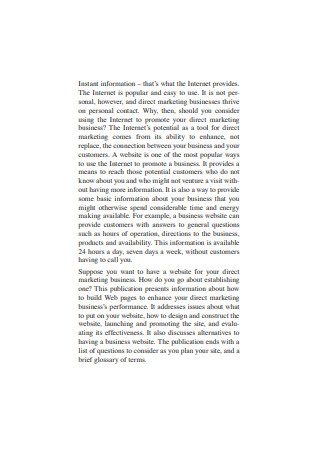
Cooperative Extension of Direct Marketing Sample
-
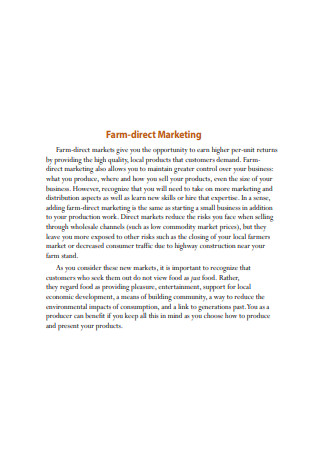
Farm Direct Marketing Sample
-

Customers Direct Marketing Example
-
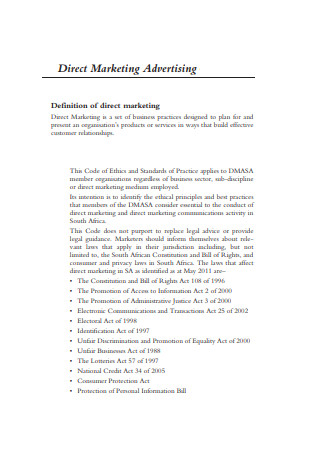
Direct Marketing Advertising Sample
-

Target Selection Algorithms in Direct Marketing
-
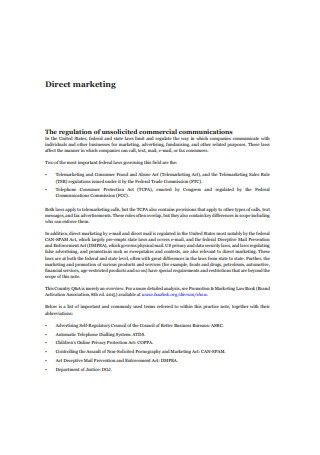
Commercial Direct Marketing Sample
-
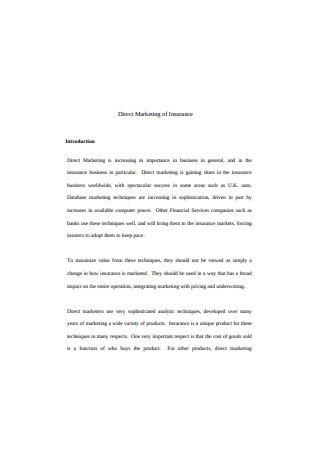
Direct Marketing of Insurance Sample
-
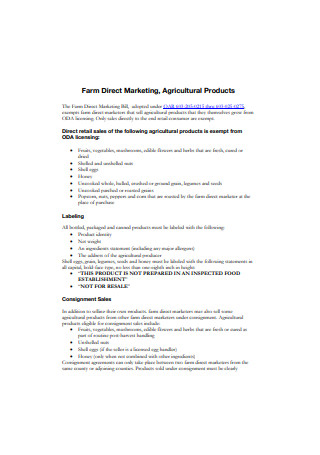
Farm and Agricultural Product Direct Marketing
-
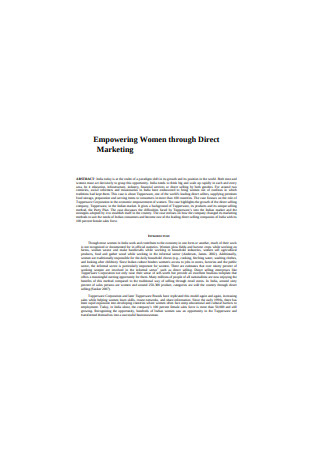
Empowering Women through Direct Marketing
-
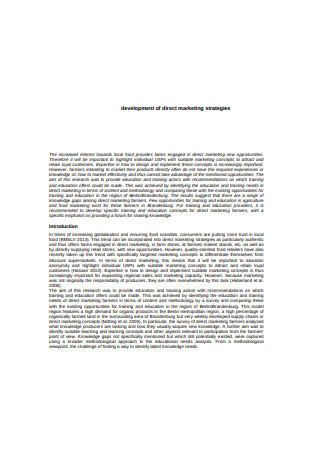
Development of Direct Marketing Strategies Sample
-

Bank Guarantee for License of Direct Marketing
-
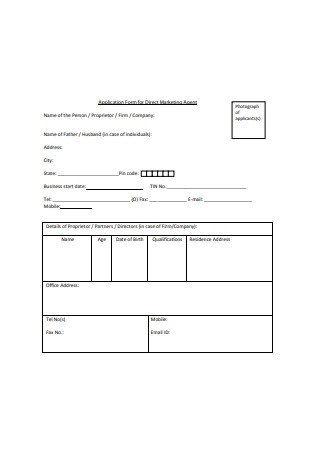
Application Form for Direct Marketing Agent Sample
-
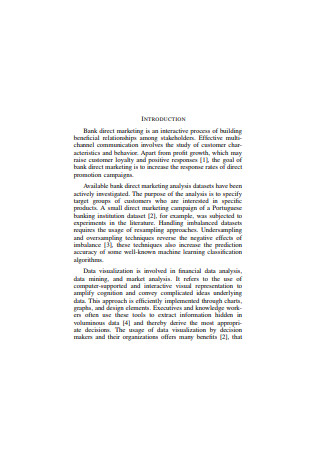
Direct Marketing Analysis Sample
-

Direct Marketing Technical Information Sample
-
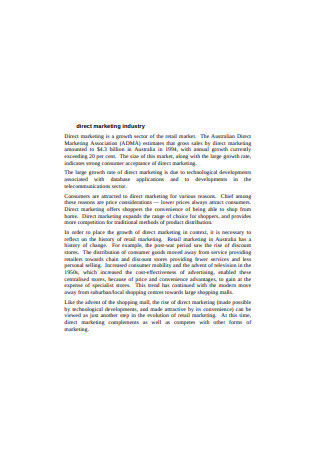
Direct Marketing Industry Sample
-
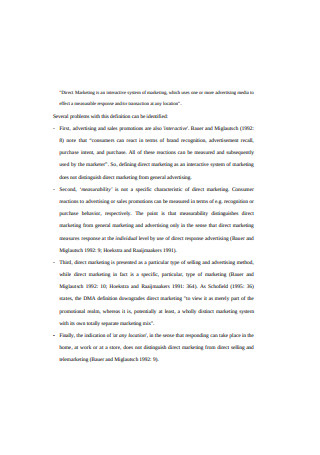
Basic Direct Marketing
-
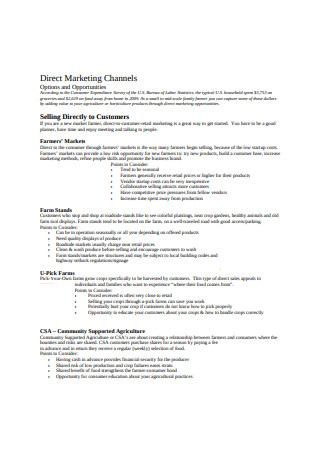
Direct Marketing Channels Sample
-
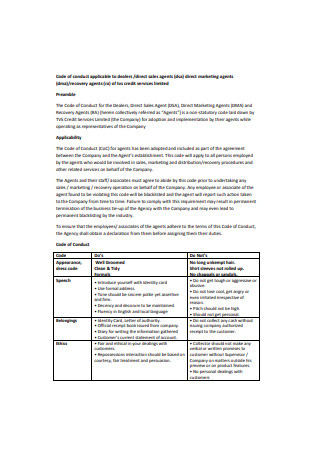
Direct Marketing Sales Agents Sample
-

Negative Effects of Personalization in Direct Marketing
-
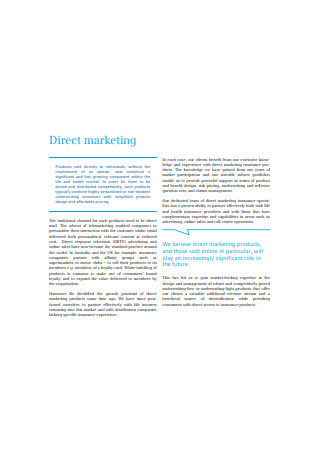
Simple Direct marketing
-
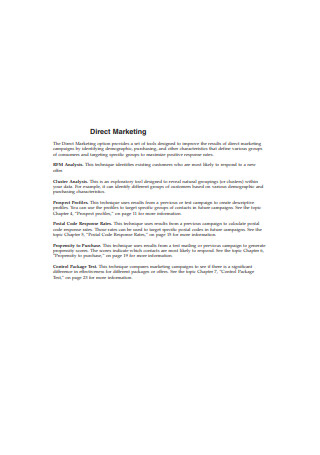
Sales Direct Marketing Sample
-

Management Direct Marketing Sample
-
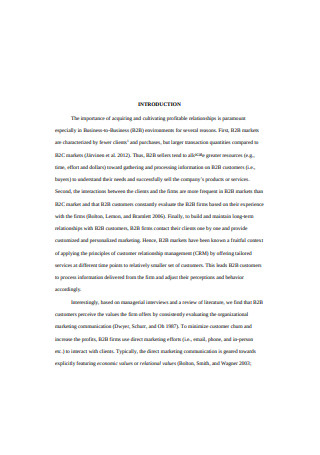
Business Firm Direct Marketing Sample
-
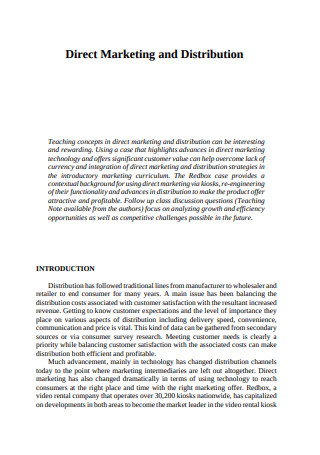
Direct Marketing and Distribution Sample
-
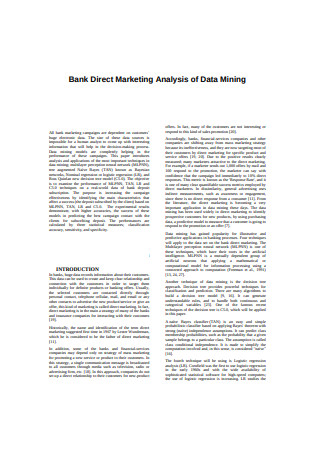
Bank Direct Marketing Analysis of Data Mining
-
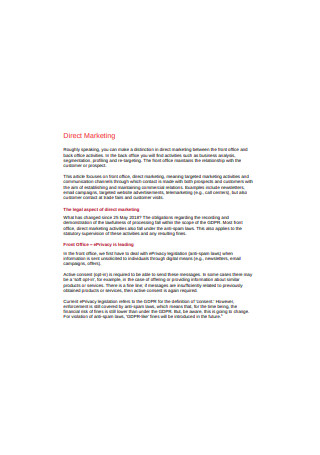
Legal Aspect of Direct Marketing Sample
-
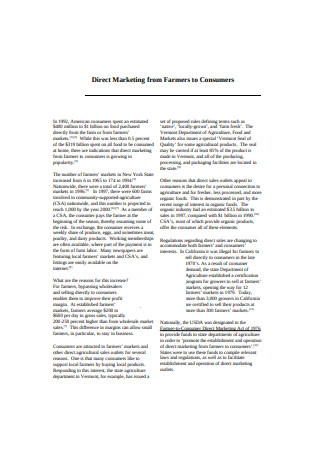
Direct Marketing from Farmers to Consumers
-

Sustainable Agriculture Direct Marketing Sample
-
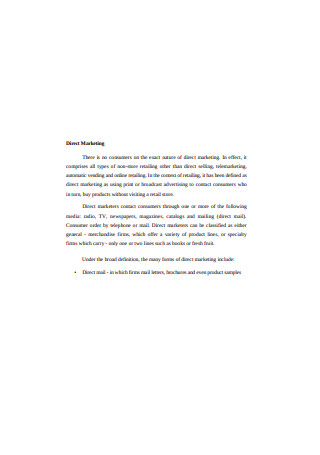
Retail Direct Marketing Sample
-
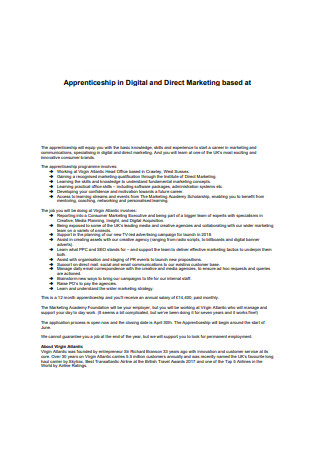
Digital Direct Marketing Sample
-
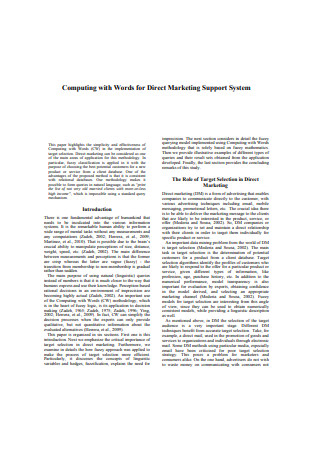
Direct Marketing Support System Sample
-
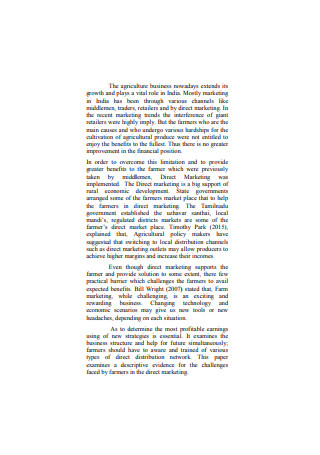
Agriculture Direct Marketing Sample
-
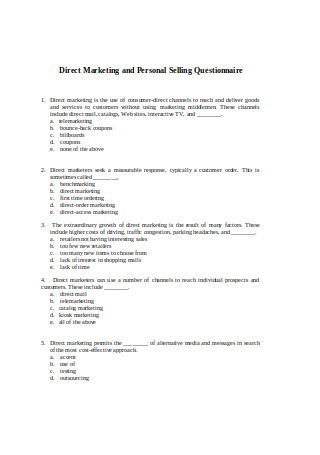
Direct Marketing and Personal Selling Questionnaire
-
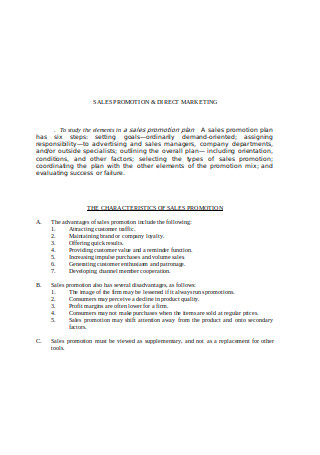
Sales Promotion and Direct Marketing Sample
-
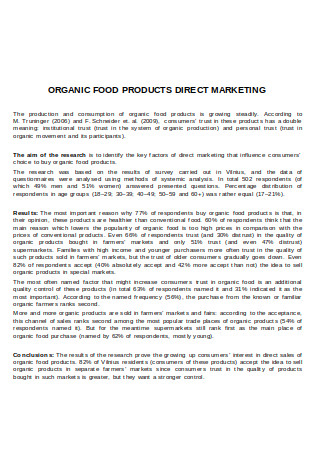
Organic Food Products Direct Marketing
-
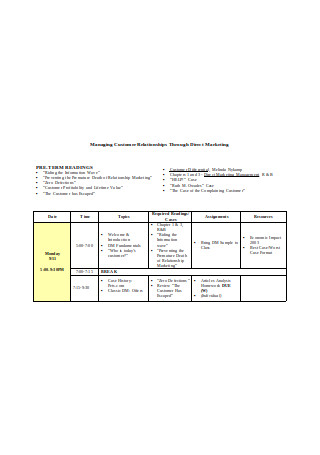
Managing Customer Relationships Through Direct Marketing
-
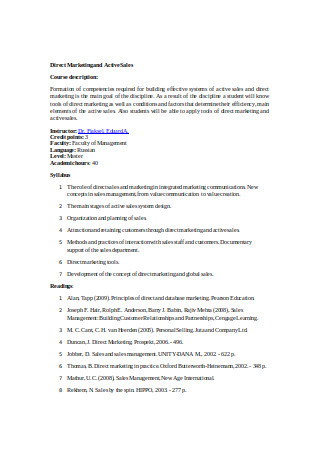
Direct Marketing and Active Sales Sample
“The average response rates sent to houses for direct marketing is 5.1%.” (Source: Marketing Charts)
“70% of customers have re-started a relationship because of direct mail.” (Source: Direct Mail Association)
“69% of people feel that direct mail is more personal than the internet.” (Source: USPS)
What Is Direct Marketing?
Direct marketing is a promotional method that enables businesses to communicate directly with prospects and customers through a variety of print and digital media. These direct marketing channels make it easy for marketers to spread information about their products, services, and brand without the assistance of an advertising middleman. What makes it different from mass marketing is how it presents itself only to those who are suspected of having an interest or needing in what your company has to offer. And because this is a targeted form of marketing, it can work to grow your clientele with the help of strategic planning and implementation.
Types of Direct Marketing
Organizations can choose from several options to carry out direct marketing as they try to communicate with their customers. But even with multiple channels available for you to employ, you can’t achieve desirable results unless you learn to use them to their best potential. And even if one approach doesn’t work out for you, there are other alternatives that you can try out to fulfill your marketing objectives.
How to Achieve a Successful Direct Marketing Campaign
Reaching those who want to hear from you and taking your solutions to those who need them the most is what direct marketing is all about. It’s a big deal for companies that want to make sure their marketing investments generate the best returns for their business. The most powerful and innovative direct marketing strategies are capable of evoking the desired response from an audience through the content delivered to them directly. But to fire up your marketing campaign, you need to understand how you can master the art and science of direct marketing without breaking the bank.
1. Target Your Audience.
Imagine how much time and resources go to waste for every moment you failed to define your audience. The sole purpose of direct marketing is to promote your products and services to a specified group that will most likely buy it. The only way you can increase your return on investment is if you take the time to find out who your audience is and how you could communicate with them. This requires an intense amount of research to make sure you don’t end up building a list full of false leads. Bear in mind that the likelihood of making a sale to a targeted customer list is much higher than it is to do so to a general audience.
2. Sell Solutions, Not Products.
No one cares about the newest widgets of your latest device. What matters most to the average consumer is what the item can do to satisfy their wants and needs. Your advertising message should give people a reason to choose your products over what your competitors have. Think about it. People don’t want a new digital watch on their wrist, but they do want a gadget that could note down reminders while informing them of the time of day. Providing solutions to everyday problems will eventually prompt an emotional response from customers that they won’t be able to shake off.
3. Get People to Respond.
The sole purpose of direct marketing is to draw out some sort of response from a particular target. Sounds simple, right? Yet many marketers still fail to form a connection with clients due to poor strategizing. The only reason why these marketing attempts don’t produce the desired results is because of how some marketers are driven by the idea of selling, and not by the practice of getting people to act. You can solve this by appealing to one’s emotions as a clever means of boosting engagement. Closing and confirming the sale might involve logic, but emotions have the power to make people reconsider their options and hear you out.
4. Mix and Match Strategies.
Now that technology has become a valuable part of the business world; it’s no wonder why direct marketing and digital marketing go hand in hand. You can’t rely on traditional mediums to do all the work, especially when their digital counterparts have a better chance of generating a higher ROI. In the same sense, you can’t expect your target audience to be on the Internet all the time. Hence, you need to be more creative with your approach by seeking for the best direct marketing solutions in both print and digital mediums.
5. Take a Personalized Approach.
Marketing would be nothing without data. Analytics, statistical modeling, and business intelligence help bridge the gap between you and your customers by providing you with useful information that can bring you closer to your audience. Whatever channel you choose to execute your direct marketing campaign, it should always be personalized to meet the individual needs of customers. Apart from making a buyer feel valued, it also shows how much you care and listen to their demands. This will attract customers to your company and bring you one step closer to accomplishing your business goals.
The Dos and Don’ts of Direct Marketing
Direct marketing is one of the best marketing approaches that small- and medium-sized businesses can leverage to attract and acquire new customers. But it’s a game that only the strongest can win and survive in, as marketers must give serious thought into the strategies they conduct to guarantee the best possible results for their efforts. With that said, there are several factors to consider to help you make the most of your knowledge and skills in direct marketing.
What to Do
1. Do plan ahead.
Jumping head-first into a campaign without a clear plan in mind is bound to have its consequences. Before executing your ideas, you need to form a marketing plan that will gear your campaign in the right direction. This should make it easy to develop a flow that you expect prospects to follow in response to your call-to-action. Think through all the possible aspects necessary to develop a plan that meets your desired goals.
2. Do create a buyer persona.
It’s not enough to have a fair idea of your target audience. Market research is a crucial part of any marketing campaign as it offers you an in-depth look into who you are talking to. The more you know about them, the easier it is to develop a message that they can connect with. You should be able to explain what they look for in an ad, why it matters, and what you can do to get a favorable response.
3. Do make a bold promise.
Never underestimate the power of a bold promise. It’s normal for some people to think that you’re full of hype. A lot of marketing campaigns these days make exaggerated statements that vow their products are miracle workers in a box. But sensationalizing your offers isn’t always a bad thing, especially to a prospect who actually needs your products. Stack on the benefits you provide until you can finally break down the barriers that hinder shoppers from making a purchase.
4. Do proofread your copy.
A good marketing message should be clear, crisp, and precise to make a lasting impact on a reader. Thus, you should always proofread your copy before it is sent. Any grammatical errors, spelling mistakes, and sentences that are hard to read must be corrected to ensure a flawless finish. It’s also best to have another pair of eyes to review the copy for any mistakes that might have been overlooked. By doing multiple checks prior to its delivery, you can confidently share your message with the public without a hint of doubt.
5. Do conduct testing.
You don’t want to settle with anything mediocre. The success of direct marketing relies on your ability to test, evaluate, and improve your current and future campaigns for better outcomes. Trying different ad copies, segmenting your consumer base, and experimenting with different proposals are some ways to generate varying results. Figuring out what works and what doesn’t also spares you from spending most of your budget on a lost cause. This approach gives you a broader outlook on market opportunities which you can optimize to obtain a higher response rate.
What Not to Do
1. Don’t try to sell to everyone.
Your desire to reach as much as people as possible may be too ambitious from where you currently stand. When you try to make your products and services appeal to a broader audience, it slowly dilutes the potency of your marketing message. This only makes it harder for prospects to capture what you are saying and use it to influence their buying decision. If you really want to spark a connection with potential customers, you need to tailor your campaigns in a way that attracts those who are interested in what you offer.
2. Don’t beat around the bush.
Anyone can claim that they provide “Quality Service” or “Satisfaction Guaranteed” products to their market. While it may sound promising, it doesn’t say much about what you are actually capable of doing. You have to begin telling people exactly how you do it. Perhaps your team can respond to inquiries in 30 minutes or less, or maybe you take pride in delivering overseas orders within a week. Whatever it is, be sure to spell it out briefly and clearly for readers to grasp.
3. Don’t write a cliché headline.
The headline of your direct marketing piece can either make or break your engagement with customers. If it’s compelling enough to hold a person’s attention, there’s a good chance they’ll want to continue reading your copy until they find something that will satisfy their needs. You also want to avoid writing overused headlines that people might have heard a billion times before. Otherwise, customers won’t think your message is even worth the read.
4. Don’t be a copycat.
It’s funny how some companies create ads that are almost the exact duplicates of what their competitors have done in the past. It’s a desperate attempt that will only give your audience something to laugh about until you can finally whip up something original. Imitating your competition is a sinful act in marketing that you don’t want to catch yourself doing. If you really want to make an impression that lasts, take the time to study how your competitors achieve success and see how you can incorporate these techniques into your own campaign.
5. Don’t expect too much.
Expectations lead to disappointments. And given how marketing is an ongoing process of testing, monitoring, and refining, you don’t want a low response rate to discourage you early on. It could take a day, a week, or even a month for some people to respond to your campaign. But whatever you do, you need to keep your business visible to your audience through consistent communication and useful advertising.
The type of direct marketing that will suit the goals of your business depends on several factors, such as your industry, budget, and target consumers. The last thing you want to do is to let your efforts leave people with a wrong impression of your business, which is why it’s essential to include the appropriate methods and strategies in your marketing mix to get a better shot at success. Feel free to use marketing templates to get a head start in the competition.
